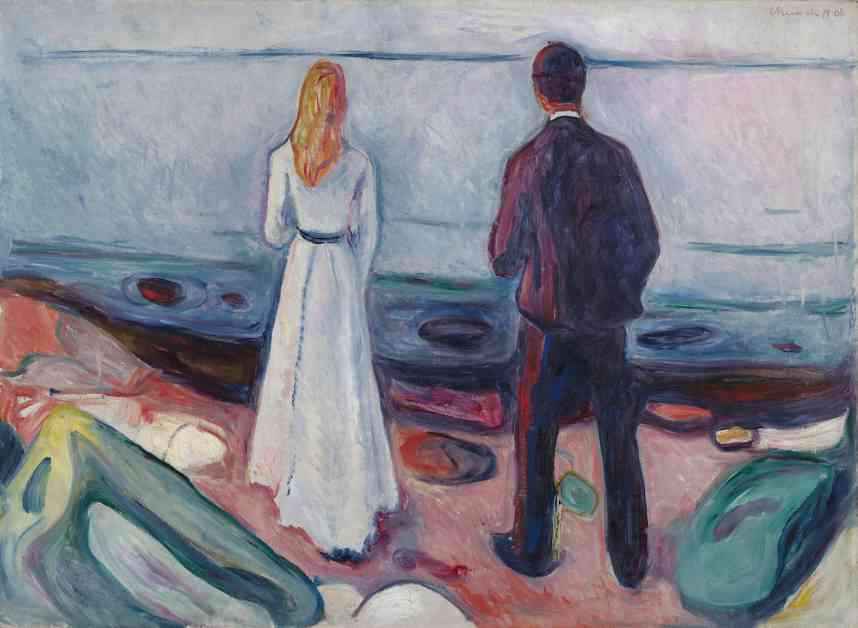Harvard’s Remarkable Edvard Munch Collection Grows Thanks to Generous New York Donors
The Harvard Art Museums in Cambridge, Massachusetts, have recently received a substantial donation that has significantly enriched their collection of renowned Norwegian painter Edvard Munch’s works. This generous contribution comes from longtime New York-based philanthropists Lynn and Phillip Straus, the latter being an esteemed Harvard alum. With the addition of 62 prints and two paintings from the Strauses, Harvard now boasts one of the most extensive collections of Munch’s art in the United States.
A Closer Look at the Masterpieces
Among the notable pieces gifted to the museum is a key work by Munch titled “Two Human Beings (The Lonely Ones),” created between the years 1906 and 1908. Lynette Roth, curator at the Harvard-affiliated Busch-Reisinger Museum, highlighted the significance of this artwork, emphasizing that it was produced during a period when Munch was delving into themes of isolation and detachment. The emotional depth and introspection evident in this piece offer viewers a poignant glimpse into the artist’s exploration of human relationships and existential concerns.
In addition to this standout painting, the donation includes six prints from a related series, multiple iterations of Munch’s iconic works “Vampire II” and “Madonna,” as well as early self-portraits. These diverse selections showcase the breadth of Munch’s artistic vision and his ability to capture raw emotions with compelling imagery.
A Lifelong Legacy of Support
The Strauses’ contribution to Harvard’s Munch collection spans over four decades, during which they have donated a total of 117 works by the acclaimed painter. Beyond their art donations, the couple has also provided funding for conservation efforts and curatorial projects, establishing an enduring legacy that extends beyond the walls of the museum. Their commitment to preserving and promoting Munch’s legacy is further reflected in the establishment of a research institute in their honor, ensuring that their passion for art will continue to inspire future generations of scholars and art enthusiasts.
Sarah Ganz Blythe, the recently appointed director of Harvard’s museums, expressed her gratitude for the Strauses’ discerning eye and thoughtful approach to collecting Munch’s works. She noted that the couple’s attention to thematic shifts in Munch’s oeuvre demonstrates a deep understanding of the artist’s evolution and artistic significance. This thoughtful curation adds a layer of complexity and richness to Harvard’s collection, enhancing the overall appreciation of Munch’s contributions to the art world.
While the financial value of the donation remains undisclosed, the true value of these artworks lies in the cultural and educational impact they will have on visitors to the Harvard Art Museums. As patrons and art lovers alike marvel at Munch’s evocative creations, they are not only witnessing a masterful display of artistic talent but also engaging with profound reflections on the human experience and the complexities of emotion.
In conclusion, the Harvard Art Museums’ acquisition of these remarkable works by Edvard Munch is a testament to the enduring power of art to transcend time and space, connecting viewers across generations through shared moments of beauty and introspection. As visitors immerse themselves in Munch’s world, they are invited to explore the depths of human emotion and contemplate the universal themes that continue to resonate with audiences worldwide.












